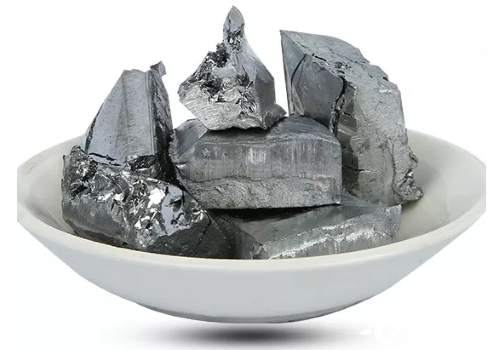
Introduction
Vanadium, a versatile transition metal, is primarily known for its ability to improve the strength, hardness, and corrosion resistance of other materials. This unique element plays a critical role across a range of industries, from construction and aerospace to renewable energy and medical devices. With its distinctive properties, vanadium has become indispensable in several high-demand applications, especially where strength and efficiency are essential. This article explores the most common uses of vanadium and how it contributes to various sectors.

Further reading: 6 Interesting Facts about Vanadium
1. Steel and Alloy Production
– High-Strength, Low-Alloy (HSLA) Steel: One of vanadium’s most significant applications is in the production of high-strength, low-alloy (HSLA) steels. Adding small amounts of vanadium to steel significantly enhances its tensile strength and corrosion resistance without adding weight, making it an ideal choice for applications where both durability and lightweight materials are crucial. HSLA steels are widely used in construction, automotive manufacturing, and oil pipelines. In infrastructure projects, vanadium-enriched steel reduces the need for maintenance and replacement, offering long-term cost savings.
– Tool Steels and Specialty Alloys: Vanadium is also used in tool steels, which require exceptional wear resistance and toughness for applications in cutting tools, drill bits, and machinery parts. In these applications, vanadium carbide particles embedded in the steel matrix improve hardness and maintain sharpness, prolonging the tool’s lifespan and reducing the need for frequent replacements. Additionally, vanadium’s ability to withstand high temperatures makes it valuable in heat-resistant alloys used in industrial settings.
2. Automotive and Aerospace Industries
– Automotive Components: In the automotive industry, vanadium alloys are favored for making critical parts such as crankshafts, gears, and connecting rods. These components experience constant stress and high temperatures, and vanadium’s strength-enhancing qualities ensure durability under such conditions. Vanadium-alloyed steels also contribute to lightweight vehicle design, which is increasingly important as manufacturers look to improve fuel efficiency and reduce emissions.
– Aerospace Engineering: Vanadium alloys, especially when combined with titanium, are also commonly used in aerospace engineering. Titanium-vanadium alloys offer a high strength-to-weight ratio, essential in manufacturing aircraft parts like landing gears and jet engine components. These alloys can withstand extreme temperatures and stress, which is critical for aerospace components subjected to dynamic conditions and intense thermal cycling.
3. Energy Storage: Vanadium Redox Flow Batteries (VRFBs)
– Renewable Energy Storage: Vanadium’s unique electrochemical properties make it an ideal material for vanadium redox flow batteries (VRFBs), a growing technology in renewable energy storage. VRFBs use vanadium ions in different oxidation states to store and release energy, providing a stable and efficient solution for large-scale energy storage. Unlike lithium-ion batteries, VRFBs can operate for decades with minimal capacity loss and can store large amounts of energy for long periods, which makes them particularly valuable for balancing the intermittent supply of solar and wind power.
– Grid Storage and Microgrids: Vanadium batteries are increasingly deployed in power grid storage systems and microgrids. They help manage peak loads, improve grid stability, and support backup power systems. With the rise of renewable energy sources, VRFBs play an important role in ensuring that clean energy can be reliably stored and used whenever needed. Countries like China and Australia are investing in vanadium battery technologies to support their renewable energy infrastructure, demonstrating the metal’s growing importance in sustainable energy systems.
4. Chemical Catalysts and Pigments
– Catalysis: In the chemical industry, vanadium compounds are widely used as catalysts, particularly in the production of sulfuric acid. Vanadium pentoxide (V₂O₅) is the most common catalyst for this purpose, facilitating the oxidation of sulfur dioxide to sulfur trioxide in a key step of sulfuric acid synthesis. Given that sulfuric acid is one of the most produced chemicals worldwide, used in everything from fertilizers to petrochemical production, vanadium’s role as a catalyst is both economically and industrially significant.
– Pigments: Vanadium compounds are also used to produce vibrant pigments for ceramics, glass, and inks. Vanadium-based pigments, such as vanadium yellow, are known for their stability and resistance to fading, which makes them valuable in applications where color longevity is essential.
5. Medical Applications
– Vanadium in Medicine: Although still under research, vanadium compounds have shown promise in medical applications, particularly in treating diabetes and certain cancers.
Vanadium’s biological effects include mimicking insulin and influencing cellular metabolism, which has led to studies on its potential as an antidiabetic agent. Additionally, vanadium-based drugs are being investigated for their possible anticancer properties, as some vanadium compounds have been found to inhibit tumor cell growth in preliminary studies. While these applications are not yet mainstream, vanadium’s potential in healthcare is an exciting area of ongoing research.
Conclusion
Vanadium’s unique properties make it essential across multiple industries. Its ability to enhance steel’s strength, durability, and temperature resistance underpins its use in construction, automotive, and aerospace applications. In the energy sector, vanadium redox flow batteries represent a promising solution for large-scale energy storage, supporting the transition to renewable energy. Meanwhile, its catalytic properties play a significant role in chemical manufacturing, and its potential medical benefits highlight vanadium’s versatility and importance in future technologies.
As industries increasingly prioritize materials that offer efficiency, strength, and environmental compatibility, vanadium’s applications are expected to expand, cementing its role in building a more resilient and sustainable future. For more refractory metal products, please check Advanced Refractory Metals (ARM).

